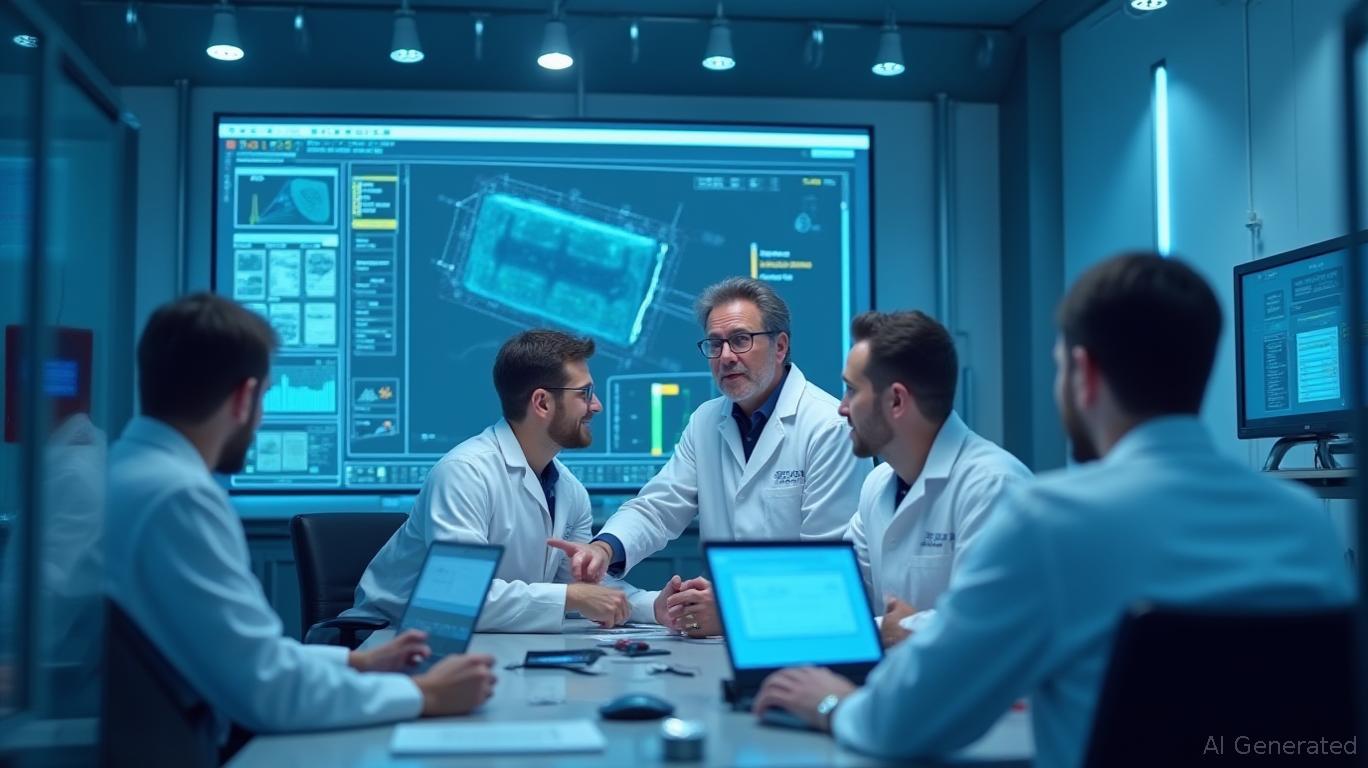Studsvik AB's NRC Approval: A Catalyst for Dominance in SMR Software Markets
The global nuclear renaissance is not merely about building new reactors—it is a race to modernize software infrastructure that will underpin the next generation of nuclear energy systems. Swedish firm Studsvik AB has taken a decisive step in this direction with its recent U.S. Nuclear Regulatory Commission (NRC) approval for expanding its CMS5 software to support Small Modular Reactors (SMRs) and advanced reactor designs. This regulatory milestone positions Studsvik as a critical enabler of the nuclear industry's transition toward smaller, safer, and more efficient power generation systems. While the immediate financial impact remains modest, the long-term strategic significance of this move cannot be overstated. For investors, the question is whether Studsvik's early leadership in SMR software can translate into sustained revenue growth amid a rapidly evolving nuclear landscape.
The Regulatory Breakthrough: CMS5's New Capabilities
The NRC's acceptance of Studsvik's Topical Report (TR) Supplement on March 21, 2025, marks a pivotal moment. The supplement, which expands the applicability of the CMS5 neutronics simulation software to SMRs and advanced reactors, now permits U-235 enrichment up to 10 wt% and maximum rod-average burnup to 80 GWd/MTU—parameters critical for optimizing fuel cycles in SMRs. These enhancements align with the U.S. Department of Energy's push for high-assay low-enriched uranium (HA-LEU) fuels, a cornerstone of next-gen reactor designs.
The software's expanded scope allows utilities and reactor vendors to validate core performance and licensing parameters for SMRs, which are inherently smaller and more complex than traditional reactors. As SMRs like NuScale's 60-MW modules or Westinghouse's eVinci design advance toward commercialization, Studsvik's CMS5 becomes a foundational tool for ensuring safety and efficiency.

Strategic Positioning: First-Mover Advantage in SMR Software
Studsvik's lead in SMR software is a classic first-mover advantage. While competitors like Framatome and Westinghouse are also developing simulation tools, Studsvik's existing NRC license for CMS5 in traditional Pressurized Water Reactors (PWRs) since 2017 gives it a head start. The TR Supplement approval now extends this credibility into the SMR space, where regulatory barriers are steep.
The global SMR market is projected to grow at a 14% CAGR through 2030, driven by projects in the U.S., China, and Europe. Each SMR developer will require software validation for licensing—a market Studsvik is now uniquely positioned to dominate.
Studsvik's stock has remained stable amid volatile markets, reflecting its steady revenue streams from legacy nuclear software. The NRC approval could catalyze a re-rating as investors factor in SMR upside.
Long-Term Tailwinds: Decarbonization and SMR Deployments
Two megatrends underpin Studsvik's long-term prospects: decarbonization and modular reactor adoption. Governments globally are prioritizing nuclear as a low-carbon baseload energy source, with SMRs offering scalable solutions for remote regions and industrial processes. The U.S. Inflation Reduction Act alone allocates $60 billion to nuclear innovation, including SMR development.
Studsvik's CMS5 software is not just a simulation tool—it is a platform for extending reactor lifespans and optimizing fuel efficiency. For existing nuclear plants, the software supports power uprates and longer fuel cycles, delaying costly retirements. For SMRs, it reduces the time and cost of licensing, a key hurdle for developers.
Financial Considerations: Near-Term Caution, Long-Term Upside
The NRC's final review is not expected until 2026, and Studsvik's 2025 financials will see limited impact. However, this delay is a blessing in disguise: it allows the company to refine its SMR software offerings while competitors scramble to catch up.
Analysts estimate Studsvik's SMR-related revenue could reach SEK 100–150 million annually by 2030, assuming 10–15 SMR projects in the U.S. alone. At its current valuation of ~SEK 1.5 billion (P/E of 18x 2024E earnings), the stock appears undervalued relative to peers like Westinghouse's parent, Brookfield Business Partners (BBU:TSX).
Risks and the Investment Thesis
Risks include regulatory delays, SMR project cancellations, and software competition. However, the NRC's timeline suggests confidence in Studsvik's technical rigor, and SMR cancellations would likely be sector-wide, not company-specific.
The investment case hinges on Studsvik's ability to capitalize on its early SMR software lead. For long-term investors, the stock offers exposure to a niche, high-margin market with limited competition. The NRC approval is a catalyst to revalue Studsvik beyond its legacy business—a re-rating already reflected in analyst upgrades since March 2025.
Conclusion: Hold for the Nuclear Renaissance
Studsvik AB is not a “get rich quick” play but a strategic stake in the SMR software ecosystem. Investors should view it as a compound growth story: a company with a 75-year nuclear legacy now pivoting to dominate a $20–30 billion SMR software market. While 2025 will see muted results, the next five years could redefine Studsvik's trajectory. For patient investors, the risk-reward here tilts firmly upward.
Hold for the long game.

Comments
No comments yet